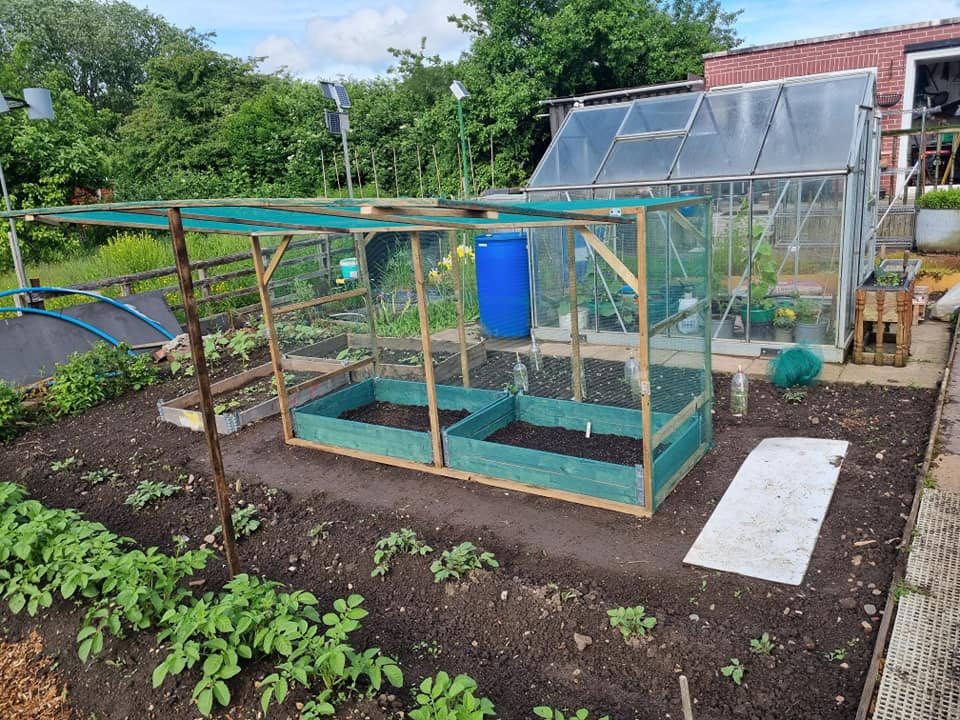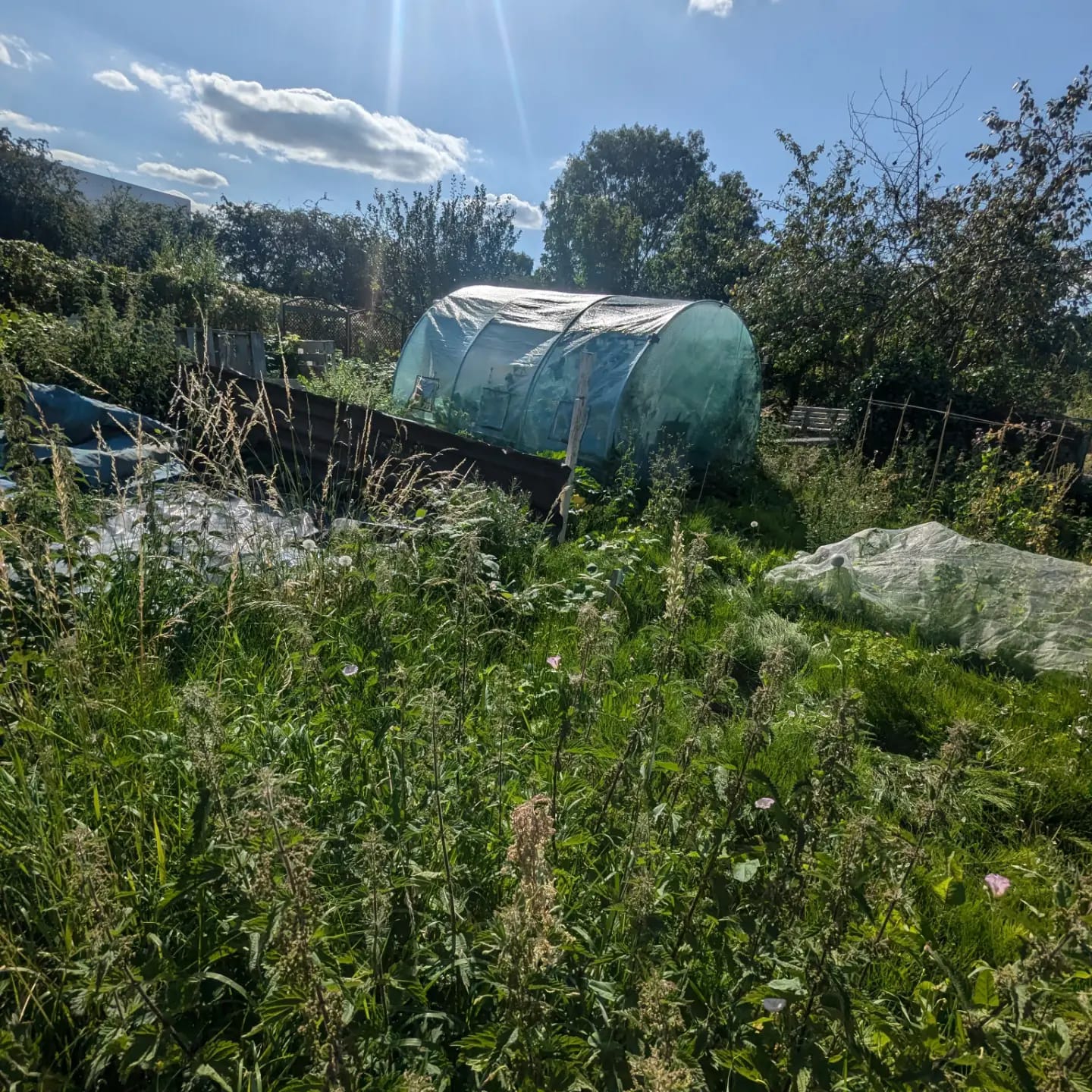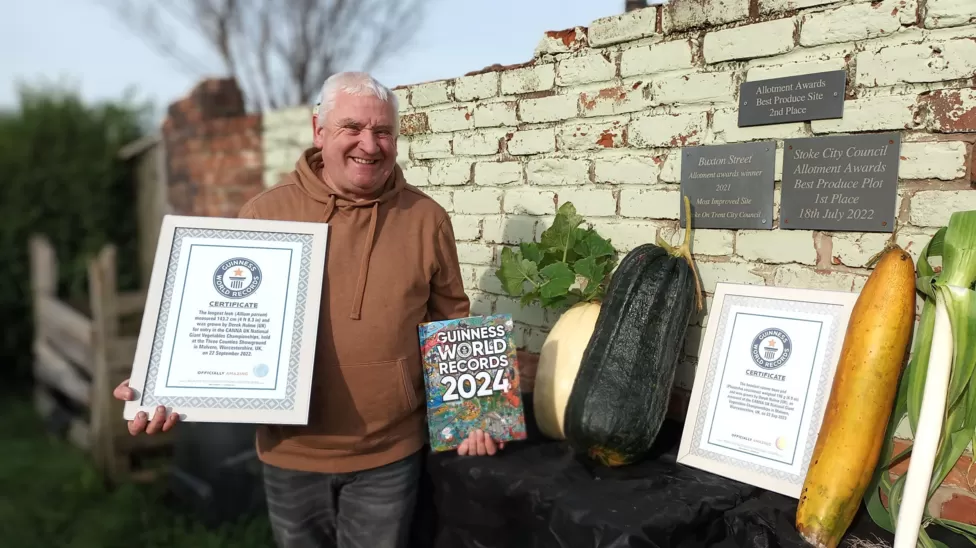Monthly Guide to Allotment Gardening: What to Do on Your Plot Year-Round
Owning an allotment is a wonderful way to enjoy fresh produce, connect with nature, and find peace in the outdoors. Whether you’re a beginner or a seasoned allotmenteer, each month offers different opportunities to sow, grow, and maintain your plot. Here’s a month-by-month guide to help you make the most of your allotment, with tips for both beginners and advanced growers. To learn more, visit nsan.org.uk and explore the North Staffordshire Allotment Network’s resources and community initiatives.
The best time of year to get an allotment – October: Preparing for Winter
What to Plant:
- Garlic: Plant individual cloves in well-drained soil for harvest next summer.
- Onions and Shallots: Plant sets to establish roots before winter.
- Broad Beans: Sow autumn varieties directly into the ground for an early start next year.
- Spring Cabbage: Sow seeds or plant young plants for an early spring harvest.
Beginner Tips:
For beginners, October is the time to clear away spent plants and remove any dead or dying foliage from your plot. This helps to prevent diseases from spreading during the winter months. Tidying up your plot by trimming back overgrown areas and raking up fallen leaves is essential to keep slugs and other pests at bay. Now is also the perfect time to plant garlic cloves and onion sets, which will establish themselves over winter and provide you with an early crop next year.
Advanced Techniques:
Experienced gardeners can make use of green manure crops, such as mustard or ryegrass, which can be sown now to protect and improve the soil over winter. These plants help suppress weeds, add organic matter, and boost soil fertility when dug in during spring. Soil testing is also highly beneficial at this time of year; by checking the pH and nutrient levels, you can plan any necessary amendments for the next growing season to optimize your yields.
November: Tidy and Mulch
What to Plant:
- Bare-root Fruit Trees and Bushes: Plant apples, pears, raspberries, and blackberries during their dormant period.
- Asparagus Crowns: Plant in well-prepared beds for future harvests.
- Rhubarb: Plant new crowns or divide and replant existing clumps.
Beginner Tips:
In November, beginners should focus on maintaining their compost heaps by turning the material regularly to speed up decomposition. Adding a balanced mix of kitchen scraps, garden waste, and cardboard will keep your compost healthy and active throughout the winter. It’s also a good idea to collect fallen leaves and create leaf mold, which can be used as an excellent soil conditioner in future seasons.
Advanced Techniques:
More advanced gardeners can use this month to start overwintering crops like broad beans and peas, especially if you have cloches or cold frames to provide extra protection. Forking over heavy soils now will also help to improve drainage and prevent waterlogging, which is crucial for keeping the soil in good condition for planting in the spring.
December: Maintenance and Planning
What to Plant:
- Hardwood Cuttings: Take cuttings from currants, gooseberries, and other fruit bushes.
- Salad Greens: Sow winter lettuces and hardy greens in cold frames or under cloches.
Beginner Tips:
December is often a quieter month on the allotment, making it the perfect time for maintenance and planning. Beginners should focus on cleaning, oiling, and sharpening their tools to ensure they’re in top condition for the next year. This is also an excellent time to plan your plot layout for the coming season, considering companion planting to maximize yields and naturally deter pests.
Advanced Techniques:
Experienced allotmenteers can use this month to prune fruit trees and bushes while they are dormant, removing any diseased wood and shaping the plants to encourage better growth next season. Creating microclimates on your plot with windbreaks or protective structures can also extend your growing season and protect tender plants from harsh weather.
January: Sowing Under Cover
What to Plant:
- Chillies, Peppers, and Tomatoes: Sow seeds indoors using heated propagators or sunny windowsills.
- Broad Beans: Sow indoors for planting out in spring.
- Sweet Peas: Sow indoors for early flowers next summer.
Beginner Tips:
January is a great time for beginners to get a head start on the growing season by sowing early crops indoors. Starting seeds like tomatoes, peppers, and chillies on windowsills or in heated propagators will give you a valuable lead on the season. This is also a good time to dig over any beds that aren’t frozen, as exposing pests to the cold can help reduce their numbers.
Advanced Techniques:
For more advanced gardeners, heated propagators can be used to start seeds that require warmth, allowing you to get a jump on the growing season with crops that need a longer time to mature. Applying lime or wood ash to beds designated for brassicas will help sweeten the soil, creating optimal conditions for next season’s crops.
February: Early Preparations and Sowing
What to Plant:
- Early Peas and Broad Beans: Sow indoors or under cloches for an early crop.
- Chillies and Aubergines: Start indoors for a long growing season.
- Spinach and Salad Greens: Sow in cold frames or under cover for a quick harvest.
Beginner Tips:
February is a month of anticipation, and beginners can start sowing early crops under cover. Starting peas and broad beans indoors or under cloches allows you to get ahead of the growing season. If your soil is workable, start preparing your beds by lightly digging in compost or well-rotted manure to enrich the soil. It’s also a good time to clean greenhouses, cold frames, and cloches to maximize light and reduce the risk of pests and diseases.
Advanced Techniques:
For more experienced allotmenteers, February is a great time to sow slow-growing crops like chillies and aubergines indoors, as these need a long season to reach maturity. Those with heated greenhouses can start propagating cuttings from perennial herbs, which will add a boost of fresh growth in spring. Soil preparation is key, and adding a layer of organic mulch can help to warm the soil and improve its structure, making it ready for spring planting.
March: Spring is in the Air
What to Plant:
- Potatoes: Plant first early varieties in well-prepared beds.
- Onions and Shallots: Continue planting sets directly into the ground.
- Carrots and Beetroot: Sow in well-drained soil as soon as the weather warms.
Beginner Tips:
March marks the beginning of the busy spring season, and it’s time for beginners to get planting. Early potatoes can be chitted and planted out into beds, and onion sets can continue to go in the ground. If you have space in a greenhouse or under cloches, consider sowing quick-growing crops like lettuce and radish for an early harvest. Keep an eye on the weather and be ready to protect young plants from late frosts with fleece or cloches.
Advanced Techniques:
Experienced gardeners can use March to start succession planting for a continuous harvest throughout the season. Stagger sowing carrots and beetroot to ensure you have fresh produce available for longer. If your soil is warm enough, consider direct sowing hardy crops like parsnips and early cabbages. Utilize fleece, cloches, or polytunnels to create warmer microclimates that help get early crops off to a strong start.
April: The Season Kicks Off
What to Plant:
- Brassicas: Sow cabbages, kale, and broccoli for summer and autumn crops.
- Tomatoes: Plant seedlings indoors or in greenhouses.
- Herbs: Sow basil, parsley, and dill under cover or in pots.
Beginner Tips:
April is the time when the allotment really comes to life, and there’s plenty for beginners to do. Start sowing brassicas like cabbages and kale directly into seed trays or the ground, and begin planting out tomatoes in greenhouses or under protection. Make sure to keep weeds under control; a little effort now will save a lot of work later. April is also the perfect time to start planting herbs, either in dedicated herb beds or in pots to keep near your kitchen.
Advanced Techniques:
Advanced allotmenteers can begin hardening off indoor-grown seedlings in preparation for planting out. This gradual process helps plants adjust to outdoor conditions and reduces transplant shock. April is also a great time to start intercropping—planting fast-growing crops like radishes or lettuce between slower-growing brassicas. This technique maximizes space and helps with weed suppression.
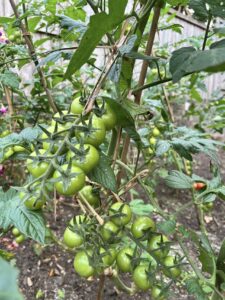
May: Planting Out and Maintenance
What to Plant:
- Runner Beans and French Beans: Sow directly into the ground or in pots.
- Courgettes and Squashes: Plant out established seedlings once frost risk has passed.
- Sweetcorn: Sow in blocks for better pollination.
Beginner Tips:
By May, the risk of frost is usually behind us, and it’s time for beginners to start planting out tender crops like beans, courgettes, and squashes. Ensure these plants are well watered after transplanting, and consider using slug traps or barriers to protect young plants. Keep on top of weeding and continue mulching to retain moisture in the soil. May is also a good time to install support structures for climbing plants such as beans and peas.
Advanced Techniques:
Experienced gardeners can start implementing more advanced maintenance techniques, such as pinching out the tips of broad beans to prevent blackfly infestations or carefully thinning out seedlings to give the strongest plants the best chance of success. Companion planting can be particularly effective in May; for example, planting marigolds near tomatoes can help deter pests and attract beneficial insects.
June: Harvest and Nurture
What to Plant:
- Beetroot and Carrots: Continue sowing in succession for a steady supply.
- Winter Brassicas: Sow brussels sprouts, kale, and winter cabbages for the colder months.
- Pumpkins: Sow directly or plant out established seedlings.
Beginner Tips:
June is the month when the first substantial harvests start coming in, and for beginners, this is a rewarding time. Keep harvesting regularly to encourage continued production, especially with crops like peas, beans, and lettuce. Water consistently, especially during dry spells, and keep an eye out for pests like aphids and caterpillars. Consider using natural deterrents or picking pests off by hand if they become a problem.
Advanced Techniques:
For those with more experience, June is a good time to start thinking about winter crops. Planting brussels sprouts, kale, and winter cabbages now will ensure you have fresh produce when most of the allotment is dormant. Staking tall or sprawling plants like tomatoes and beans can help maintain airflow and prevent disease. It’s also a good idea to start feeding heavy feeders like tomatoes and pumpkins with a high-potash fertilizer to boost fruiting.
July: Peak Growing Season
What to Plant:
- Successional Sowing: Continue sowing lettuce, radishes, and beetroot to maintain a steady supply.
- Winter Vegetables: Sow leeks, turnips, and swedes to harvest in the colder months.
- Autumn Crops: Start sowing spinach and oriental greens like pak choi and mizuna for a fall harvest.
Beginner Tips:
July is the height of the growing season, and beginners will find their plots bursting with activity. Regular watering is crucial, especially during dry spells, as plants can quickly suffer from heat stress. Water early in the morning or late in the evening to minimize evaporation and ensure that the water reaches the roots. Harvest crops like courgettes and beans regularly to keep them productive, and remember to mulch around plants to retain moisture and suppress weeds. Be vigilant about removing dead or diseased leaves to maintain plant health.
Advanced Techniques:
Advanced gardeners can focus on fine-tuning their maintenance routines in July. Consider shading crops like lettuce and spinach to prevent them from bolting in the summer heat. Implementing drip irrigation or soaker hoses can make watering more efficient, particularly for thirsty plants like tomatoes and squashes. July is also a good month to start training cucumbers and squashes onto trellises to save space and improve air circulation. Keep feeding your plants with organic fertilizers to support heavy cropping through the peak season.
August: Harvest and Plan for Autumn
What to Plant:
- Salad Leaves: Sow quick-growing salad leaves such as rocket, mustard greens, and lettuce.
- Spring Cabbages: Sow in seed trays or directly in the ground for next year’s harvest.
- Chinese Cabbage and Kale: Sow for a late autumn and winter harvest.
Beginner Tips:
In August, it’s all about harvesting and enjoying the fruits of your labor. Continue to pick crops like tomatoes, beans, and cucumbers regularly to encourage further production. Keep a close eye on watering, as August can still bring hot and dry weather. If you’re feeling overwhelmed by the abundance of produce, consider preserving your crops by freezing, pickling, or making jams and chutneys. Don’t forget to keep planting short-season crops like radishes and salad greens to fill in any gaps left by harvested plants.
Advanced Techniques:
For the seasoned allotmenteer, August is an excellent time to start thinking ahead to autumn and winter. Sowing spring cabbages now will give them enough time to establish before winter sets in. If you haven’t already, use netting to protect brassicas from cabbage white butterflies and pigeons, which can cause significant damage. August is also a great time to conduct soil tests to determine if any amendments are needed before winter. Applying a layer of well-rotted manure or compost to empty beds now will enrich the soil for next season’s crops.
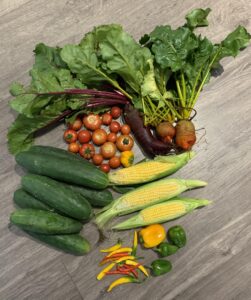
September: Prepare for Transition
What to Plant:
- Broad Beans and Peas: Sow overwintering varieties for an early spring harvest.
- Garlic: Start planting garlic cloves towards the end of the month.
- Leafy Greens: Sow spinach, chard, and mustard greens to keep the harvest going.
Beginner Tips:
September signals the beginning of the transition from summer to autumn. For beginners, this is a great time to start tidying up spent plants and clearing away any debris that could harbor pests over the winter. Begin sowing overwintering crops like broad beans and peas directly into the ground, and plant garlic cloves in well-drained soil for an easy and rewarding crop next year. Continue to harvest the last of your summer crops, and consider planting fast-growing leafy greens to extend the season.
Advanced Techniques:
Experienced gardeners can make the most of September by starting to prepare beds for overwintering crops. Applying a mulch of compost or leaf mold will help improve soil structure and fertility. Consider sowing a green manure, such as winter rye or field beans, to protect and enrich the soil over the colder months. If you grow soft fruits, now is a good time to prune summer-fruiting raspberries and tie in new canes for next year. Don’t forget to plan your crop rotations to ensure healthy soil and robust harvests in the seasons to come.
Embrace Every Season with NSAN
From the first sowing of garlic in October to the busy harvests of July and August, managing an allotment is a year-round adventure. Each season brings its own set of tasks and rewards, helping you connect deeply with the cycles of nature. Whether you’re a newcomer eager to learn or a seasoned grower looking to refine your techniques, there’s always something to do on the plot.
For more guidance, tips, and community support, visit nsan.org.uk and explore the North Staffordshire Allotment Network. Get involved with our workshops, community events, and resources designed to help you make the most of your allotment. Happy gardening, and remember that every season is an opportunity to grow!

